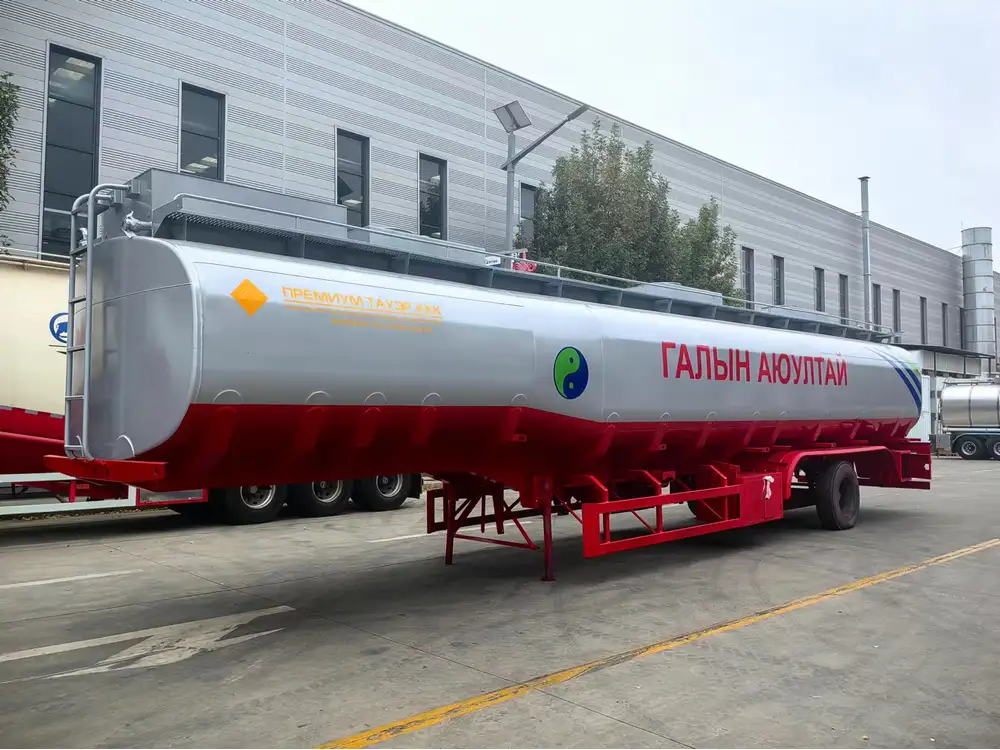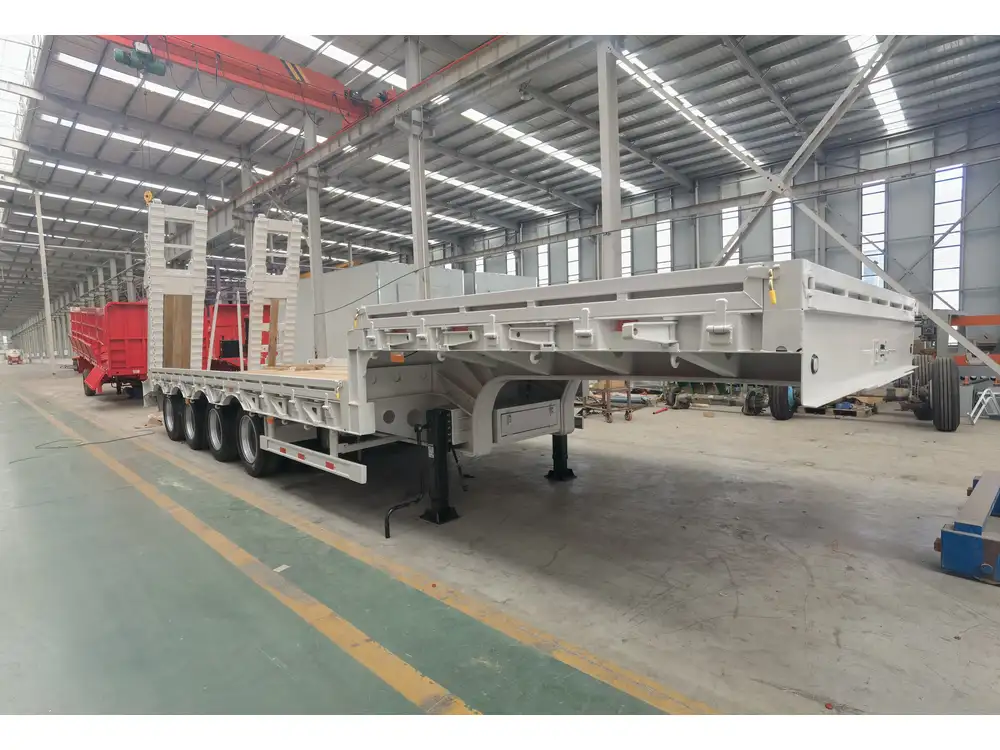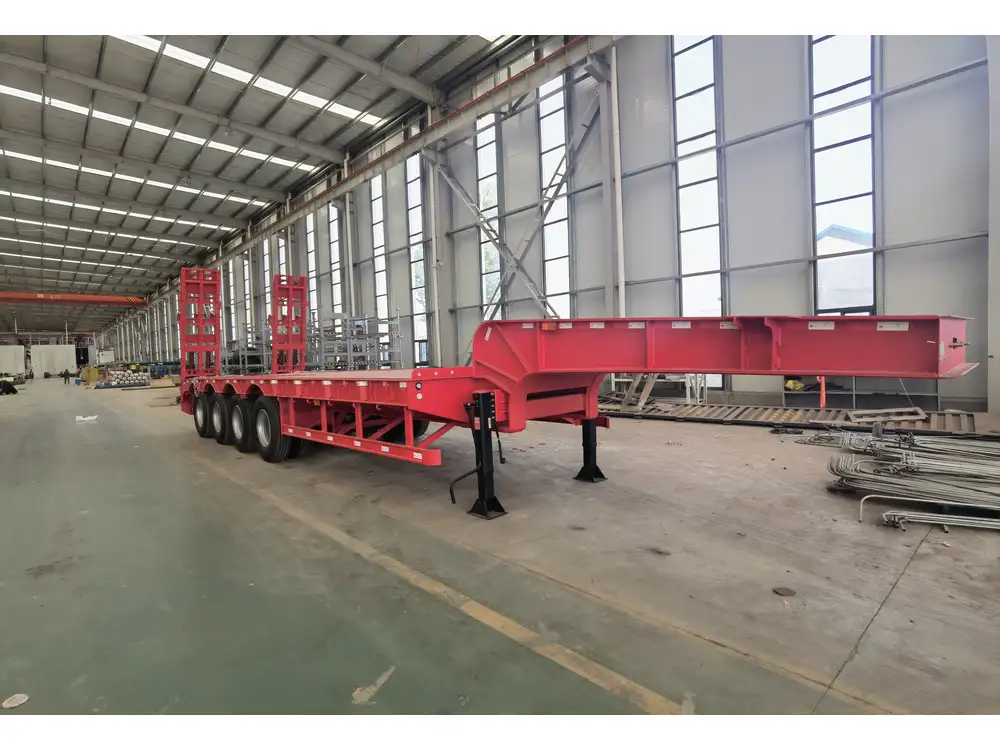When delving into the transportation industry, particularly focusing on semi wood trailers, one fundamental question that arises is: how much does a semi wood trailer weigh empty? Understanding this weight is crucial for logistics, load management, and regulatory compliance. In this comprehensive article, we will analyze multiple factors affecting the weight of semi trailers, offering insights that extend beyond surface-level knowledge.
Factors Influencing the Weight of Semi Wood Trailers
The weight of an empty semi wood trailer can vary significantly based on numerous factors. Below, we explore these determinants to provide a reliable understanding of empty weight.
| Factor | Description |
|---|---|
| Construction Material | The materials used in the frame and body (wood vs. steel vs. aluminum). |
| Dimensions | Length, width, and height can affect overall weight. |
| Design Type | Variations like flatbeds, curtain sides, or enclosed trailers have different weights. |
| Axle Configuration | The number and type of axles impact the weight distribution and total weight. |
| Suspension System | Different suspension systems can alter the empty weight due to material diversity. |
| Manufacturing Practices | The methodologies used by different manufacturers play a significant role. |
Construction Material
Semi wood trailers may incorporate various materials—each contributing differently to the overall weight. Wood is generally lighter than metal; however, the choice of wood type (e.g., hardwood versus softwood) can influence the weight. Trailers using composite panels often balance durability with weight, leading to potential benefits in both transportation efficiency and payload capacity.

Dimensions
The dimensional aspects of semi wood trailers are not just aesthetic. A longer trailer will generally weigh more due to increased materials used. However, the proportionate increase in load capability can sometimes justify this extra weight, underscoring the balance that manufacturers aim to achieve in design.
Design Type
Different design types present distinct empty weights:
- Flatbed Trailers: Typically lightweight due to a minimalistic structure, making them versatile for transporting various loads.
- Enclosed Trailers: Often heavier due to added components like side walls and roofs.
- Curtain-Sided Trailers: Typically fall between flatbeds and enclosed models in terms of weight.
Axle Configuration
The axle configuration significantly impacts the weight distribution and overall capacity of a semi wood trailer. Trailers with additional axles often have increased empty weights, but enhance the stability under load, leading to a well-rounded transport option.

Suspension System
Suspension systems play an important role in weight management. For instance, air suspension systems can be lighter than traditional steel springs but often add costs. Understanding these nuances can impact logistics decisions considerably.
Manufacturing Practices
Lastly, the manufacturing practices of trailer companies influence the weights significantly. Innovations in welding technology, design integration, and materials can result in lighter, stronger trailers, providing advantages across the board for manufacturers seeking to enhance their product lines.
Average Weight Range of Semi Wood Trailers
Most semi wood trailers, when empty, weigh between 3,000 to 8,000 pounds. The weight range primarily depends on the factors discussed earlier. Below is a simplified comparison based on design types and materials used:
| Type | Typical Empty Weight (lbs) |
|---|---|
| Standard Flatbed | 3,000 – 5,500 |
| Enclosed Trailer | 5,500 – 8,000 |
| Curtain-Sided | 4,200 – 6,500 |

Weight Comparison by Material
The choice of material significantly impacts the weight, as demonstrated here:
| Material | Estimated Empty Weight (lbs) |
|---|---|
| Wood | 3,000 – 5,000 |
| Steel | 5,000 – 8,000 |
| Aluminum | 4,000 – 6,000 |
Regulatory Implications Regarding Weight
Understanding the empty weight of a semi wood trailer is not merely academic; it has practical implications including state and federal regulations regarding transport. Overweight loads can lead to hefty fines and infringements, making compliance a necessity for operators.
Maximum Legal Weight Limitations
The Federal Motor Carrier Safety Administration (FMCSA) stipulates that the maximum legal weight limit for commercial vehicles in the U.S. is 80,000 pounds for the combined weight of the truck and trailer. Operators must ensure that the entirety of their load, including the trailer’s weight, adheres to these regulations.

Permit Requirements for Heavier Trailers
Certain states may have regulations that demand special permits for trailers exceeding a specified weight, often around 10,000 pounds. This requirement emphasizes the importance of knowing not only the weight of the trailer but also the combined weight when loaded.
Calculating Payload Capacity
Determining Payload Capacity
To effectively calculate the payload capacity of a semi wood trailer, it’s essential to know both the trailer’s empty weight and the total weight limits established by regulations. The formula is straightforward:
Payload Capacity = Maximum Legal Weight Limit – Empty Weight of the Trailer
For example, if you have an empty semi wood trailer weighing 5,000 pounds, the payload capacity can be computed as:
If the maximum legal weight is 80,000 pounds:
Payload Capacity = 80,000 pounds – 5,000 pounds = 75,000 pounds
This calculation underlines the efficiency and productivity potential for carriers and shippers alike.

The Impact of Weight Distribution
Beyond simple calculations, the importance of weight distribution cannot be overstated. Improperly balanced loads can lead to dangerous driving conditions, affecting braking, acceleration, and overall vehicle stability. Thus, operators must ensure even distribution across the axles, which may necessitate adjustments in loading practices based on the trailer’s design and weight dynamics.
Recent Trends and Innovations in Semi Wood Trailers
The transportation industry continues to see innovations that can affect the weight characteristics of semi wood trailers.
Advanced Materials
Recent advancements in composite materials also show promise in creating lighter trailers that do not compromise on strength, enhancing overall performance.

Design Innovations
Furthermore, pairing traditional wooden designs with modern technology, such as automated loading systems, not only streamlines the loading process but can also lead to significant weight savings over time, improving overall transport efficiency.
Environmental Considerations
As the industry moves towards sustainability, environmentally friendly practices are becoming more of a priority, leading to innovations that reduce both the weight and carbon footprint associated with manufacturing and operating semi trailers.
Conclusion: Importance of Knowing the Empty Weight of Semi Wood Trailers
Understanding the empty weight of semi wood trailers is multifaceted, encompassing design considerations, regulatory implications, and even environmental factors. By possessing a clear comprehension of these nuances, logistics professionals can make informed decisions, optimizing both efficiency and compliance.
In summary, as you assess your transportation needs or seek to optimize load management, always return to the key question of weight. Armed with this knowledge, we position ourselves to best navigate an ever-evolving transportation landscape. A thorough grasp of these complexities not only promotes safety and adherence to regulations but can also enhance the net profitability of hauling operations.
Whether you are in the market for a new trailer or aiming for optimal load configuration, the insights gathered here are indispensable. A well-informed approach will lead to more strategic choices, operational excellence, and ultimately, greater success in the field of logistics and transportation.



